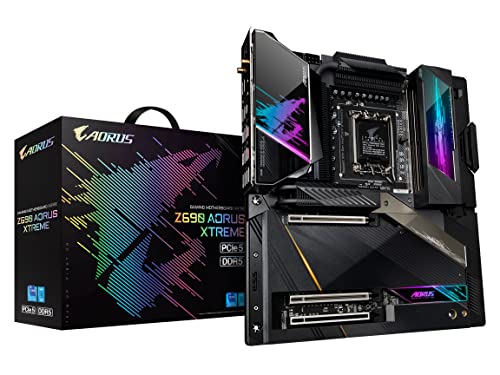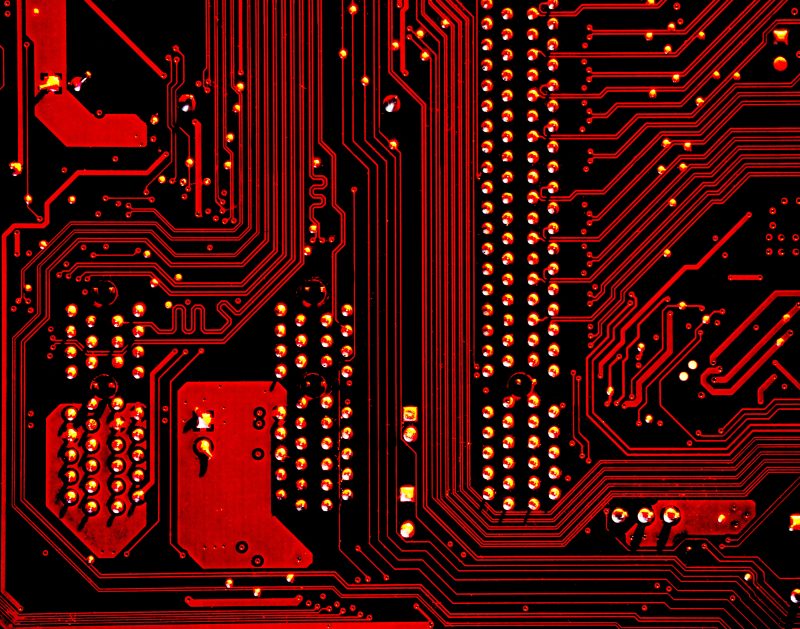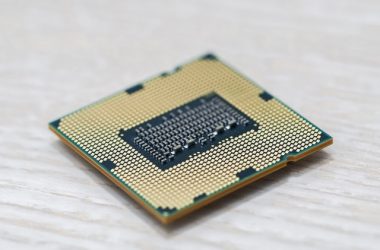Intel has decided to take the competition head-on with its announcement of its latest CPU. Intel says that its latest offering will provide support for PCIe 5 and DDR5. Incredible, considering that their current CPUs, with support for the PCIe 4 interface, only came into being earlier this year. What are we talking about? What is PCIe 5? How is it different from PCIe 4? What is DDR5? Read on to find all the answers you seek and more.
PCIe 5: The High-Speed Expressway
Think of PCIe as the highway which connects your CPU, your storage (read SSD), and your RAM. If this highway was just a single-lane carriageway, the traffic would move slowly. It would take ages for data to move from place A to place B. Hence, it became imperative, over the years, to broaden these highways to keep up with the growing demand for data. This resulted in the successive version of PCIe standards.
PCIe 5 is the latest in the components interconnect standards. It is capable of double the speed of the PCIe 4 standards. PCIe 5 interface, delivers 3.94 GB/s as opposed to PCIe 4’s 1.97 GB/s. Further, the PCIe 5 standard delivers 32 GIGATRANSFER/second in comparison to PCIe 4’s 16 GIGATRANSFERS/second. These speeds are unprecedented. However, keep in mind with the rapid growth of AI technology these speeds need to keep up. Hence, you can expect these to keep growing at an increasing rate.
While it all seems impressive, one might wonder what this means for the consumer at large.
Remember when you spent hours copying vast amounts of data from one drive to another? Thanks to the advancement in PCIe standards that today, this happens in a matter of seconds. Further, this standard exponentially adds to the processing power of your computer. How? Simple. The faster the data travels the sooner it is processed by the CPU.
Agreed that our need has not outgrown the PCIe 4 standard. PCIe 5, provides for tomorrow’s needs, today. PCIe 5 lays the internal infrastructure to support future, resource-hungry software, games, and applications. The growing demand for technologies like NVMe SSD storage, DDR5 RAM, and PCIe 5 compatible CPUs warrant the use of PCIe 5 standard to support it.
DDR5: The Technology in waiting
Quite like the PCIe 5 standard for data bus, DDR5 is the newest standard for the physical memory (RAM) of your computer.
DDR5 RAM standards, like PCIe standards, focus on increasing the bandwidth of the RAM. Additionally, it aims to reduce power consumption.
The result is that you get a technology that offers you well over 30% more bandwidth when compared to the DDR4 RAM’s maximum bandwidth of 3.2 Gbps per pin. The DDR5 iteration offers bandwidth which starts at 4.8 Gbps per pin @ 3200 MHz frequency. This may eventually be scaled up to a further 8.4 Gbps per pin. The standard frequency range for DDR4 varies between 1600MHz to 3200Mz. However, there are DDR4 RAM chips that claim higher frequency (up to 5000MHz), but these are over-clocked modules. On the other hand, the frequency ranges for DDR5 start at 3200 MHz and go up to 6400MHz. Additionally, these performance upgrades come with lower power consumption and better latency parameters.
Intel’s 12th Generation Alder Lake CPUs are here. As a result, they are set to be the first to roll out support for DDR5. Competitor AMD is not far behind though. You can expect AMD to catch up with their Zen 4 CPU, which is expected in 2022.
The Z690 Motherboard is here
With the recent upgrades to RAM and CPU technology, motherboard upgrades would naturally follow. Motherboard manufacturers have scrambled to get their version of the Z690 on the market. All of this is thanks to Intel’s Alder Lake CPU announcement.
The Z690 motherboard will feature the PCIe 5 data bus and PCIe 5 DDR5 RAM. As it is being reported, the Z690 hopes to achieve this by using a new LGA1700 socket that has more pins. This will not be compatible with the LGA 12/15XX socket from earlier. This means that your old cooling device will also require newer variants or mountings. Fortunately, manufacturers are reported to be offering upgrade kits.
The 600 series comes with significant advancement over the 500 series. To name a few, you get PCIe 5 as well as the PCIe 4 lane for the CPU. That is 16 PCIe 5 and 4 PCIe 4 lanes. Further, on the lanes front you now get PCIe 4 lanes for the chipset. This is again a significant improvement as compared to only PCIe 3 in the earlier motherboard designs.
To add to this, you also get a significant upgrade on the DMI. Earlier, the 10th Generation boards supported x4 Gen 3 DMI. However, many users still felt a bottleneck when it came to the link between the CPU and the chipset. As a result, this got upgraded to the x8 Gen 3 with the 11th Generation. While the 11th Generation boards addressed this issue, the 12th Generation board takes it to a new level. Evidently, you now get x8 Gen 4 DMI. Surely with this, these bottlenecks can be considered a thing of the past.
While these are just some of the significant upgrades, these boards offer a lot more. For instance, you get Wi-Fi 6E, USB 3.2 Gen 2×2, 6 X SATA @6 Gbps and varying NIC configurations.
From advancement in data bus technology to CPUs and RAM, the 12th generation is geared up to deliver a tremendous experience.
Comparison of the 8 Best Motherboards with PCIe 5
Check out our Best PCIe 5 Motherboards for the full reviews.
| Image | Product | Details | Check Price |
|---|---|---|---|
 | Asus ROG Maximus Z690 Hero | Socket: LGA1700 Form Factor: ATX CPU: Intel 12 RAM: Max. 128 DDR5 Expansion Slot: 2 X PCIe 5.0 X 16 slots (x16, x8-x8) 1 X PCIe 4.0 X 16 slots (x4, x4/x4 via ROG Hyper M.2 card) 3 X M.2 slots 2 X M.2 slots Via ROG Hyper M.2 Card Storage: 6 X SATA 6GB/s I/O Ports: 1 X HDMI 2 X USB 2.0 2 X Thunderbolt 4 7 X USB 3.2 Gen 2 (6 Type-A + 1 Type-C) 1 X 2.5GbE Ethernet port 5 X Gold-Plated Audio Jack 1 X S/PDIF Out 1 X Intel Wi-Fi 6E connector | Check on Amazon |
 | Gigabyte Z690 AORUS Master | Socket: LGA1700 Form Factor: ATX CPU: Intel 12 RAM: Max. 128 DDR5 Expansion Slot: 1 X PCIe 5.0 X x16 2 X PCIe 4.0 x16 4 X M.2 slots Storage: 6 X SATA 6GB/s I/O Ports: 1 X DisplayPort v1.2 2 X USB 3.2 Gen 2x2 Type-C 8 X USB 3.2 Gen 1 Type-A 2 X Thunderbolt 4 Header 1 X 10GbE Ethernet port 5 X Audio Jacks 1 X S/PDIF Out 1 X Intel Wi-Fi 6E connector | Check on Amazon |
 | Asus Prime Z690M-Plus | Socket: LGA1700 Form Factor: mATX CPU: Intel 12 RAM: Max. 128 DDR4 Expansion Slot: 1 X PCIe 5.0 X x16 1 X PCIe 4.0 x16 2 X PCIe 3.0 x1 3 X M.2 slots Storage: 4 X SATA 6GB/s I/O Ports: 1 X HDMI 1 X DisplayPort 2 X USB 2.0 1 X Thunderbolt 4 Header 1 X USB 3.2 Gen 2x2 Type-C 1 X USB 3.2 Gen 2 Type-A 4 X USB 3.2 Gen 1 Type-A 1 X 1GbE Ethernet port 3 X Audio Jacks | Check on Amazon |
 | Gigabyte Z690 AORUS Xtreme | Socket: LGA1700 Form Factor: EATX CPU: Intel 12 RAM: Max. 128 DDR5 Expansion Slot: 1 X PCIe 5.0 x16 1 X PCIe 5.0 x16 (x8) 2 X PCIe 4.0 x16 (x4) 4 X M.2 slots Storage: 4 X SATA 6GB/s I/O Ports: 2 X Thunderbolt 4 (supports DisplayPort v1.4) 10 X USB 3.2 Gen 2 Type-A 1 X 10GbE Ethernet port 1 X 2.5GbE Ethernet port 2 X Audio Jacks (Line-Out, Mic) 1 X S/PDIF Out 1 X Intel Wi-Fi 6E connector | Check on Amazon |
 | Gigabyte Z690 AERO G | Socket: LGA1700 Form Factor: ATX CPU: Intel 12 RAM: Max. 128 DDR5 Expansion Slot: 1 X PCIe 5.0 X x16 2 X PCIe 4.0 x16 4 X M.2 slots Storage: 6 X SATA 6GB/s I/O Ports: 1 X HDMI v1.4 1 X DisplayPort v1.2 2 X USB 3.2 Gen 2x2 Type-C 2 X USB 3.2 Gen 2 Type-A 2 X USB 2.0/1.1 4 X USB 3.2 Gen 1 1 X 2.5GbE Ethernet port 2 X Audio Jacks (Line-Out, Mic) 1 X S/PDIF Out 1 X Intel Wi-Fi 6E connector | Check on Amazon |
 | Asus Prime Z690-P Wi-Fi | Socket: LGA1700 Form Factor: ATX CPU: Intel 12 RAM: Max. 128 DDR4 Expansion Slot: 1 X PCIe 5.0 x16 1 X PCIe 4.0 x16 (x4) 2 X PCIe 3.0 x16 (x4) 1 X PCIe 3.0 x1 3 X M.2 slots Storage: 4 X SATA 6GB/s I/O Ports: 1 X DisplayPort 1 X HDMI 1 X USB 3.2 Gen 2x2 Type-C 1 X USB 3.2 Gen 2 Type-A 2 X USB 2.0 Type-A 2 X USB 3.2 Gen 1 Type-A 1 X 2.5GbE Ethernet port 5 X Audio Jacks 1 X S/PDIF Out 1 X Intel Wi-Fi 6 connector 1 X PS/2 | Check on Amazon |
 | Asus Prime Z690-A | Socket: LGA1700 Form Factor: ATX CPU: Intel 12 RAM: Max. 128 DDR5 Expansion Slot: 1 X PCIe 5.0 x16 1 X PCIe 3.0 x16 (x4) 2 X PCIe 3.0 x16 (x4) 1 X PCIe 3.0 x1 4 X M.2 slots Storage: 4 X SATA 6GB/s I/O Ports: 1 X DisplayPort 1 X HDMI 1 X USB 3.2 Gen 2x2 Type-C 3 X USB 3.2 Gen 2 Type-A 4 X USB 3.2 Gen 1 Type-A 1 X 2.5GbE Ethernet port 5 X Audio Jacks 1 X S/PDIF Out 1 X PS/2 | Check on Amazon |
 | GIGABYTE Z690 AORUS Ultra | Socket: LGA1700 Form Factor: ATX CPU: Intel 12 RAM: Max. 128 DDR5 Expansion Slot: 1 X PCIe 5.0 x16 2 X PCIe 3.0 x16 (x4) 4 X M.2 slots Storage: 6 X SATA 6GB/s I/O Ports: 1 X DisplayPort 2 X USB 3.2 Gen 2x2 Type-C 4 X USB 3.2 Gen 2 Type-A 4 X USB 3.2 Gen 1 Type-A 4 X USB 2.0/1.1 1 X 2.5GbE Ethernet port 2 X Audio Jacks 1 X S/PDIF Out 1 X Wi-Fi Connector | Check on Amazon |
So, what does all of this mean?
It is always great to have the latest that technology offers. It provides you with a sense of comfort, to know that you are future-ready for what software technology has to throw at you. This is good, but one must consider a key aspect that may be overlooked. What if the future is not ready for you?
Presently, there are very few, if any, actual use cases for this technology. Hence, when choosing to upgrade it would be wise to take a minute and consider how you intend to use this technology.
Just take the example of RAM. DDR5 is cutting-edge new technology. Seasoned enthusiasts would agree, that when the new technology is launched, it is the refinements that bring the significant difference in performance. RAM presents numerous opportunities to enhance performance. By tweaking clock timing, a great degree of variation is achieved. It is only when these variations are tested in the real world that the ideal configurations come to the fore.
Of course, it can be argued that without upgrading; how does one figure out what works and what does not? And hence, I reiterate a thorough evaluation of one’s needs is always a good place to start.
While there are plenty of boards to come from leading manufacturers, news with respect to this is still awaited. The coming weeks promise many more launches. The manufacturers are bound to keep a keen eye on the competition and try to outdo the other. As a consumer, one must wait just a little while longer to see what is on offer. Already, manufacturers like Asus, Gigabyte, and MSI spoil you for choice. If this is anything to go by, you can expect a plethora of options not too long from now.
Conclusion
The advancement in technology offered by these motherboards ensures that hardware requirements for the foreseeable future are well covered. Tech enthusiasts may feel the urge to jump onto the opportunity to upgrade their hardware and be ready for the time to come. Needless to say, these technologies promise tremendous performance which we all do look forward to.
However, an upgrade right now does not offer much experiential enhancement. This is to say, if you presently use DDR4 or the PCIe 4 technologies with your current PC configuration. If your configurations are older, you obviously are not in the habit of upgrading at the drop of a hat. In such a case, it may be advisable to upgrade.
If you use custom-built proprietary software, there may be a chance that your system configurations need a tweak. These new technologies may provide a great solution. Of course, nothing that a quick comparison cannot fix.





